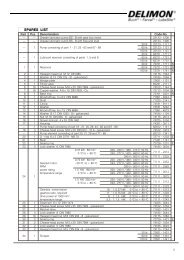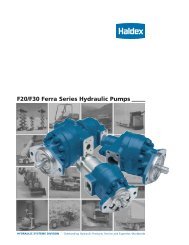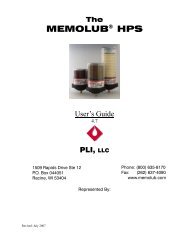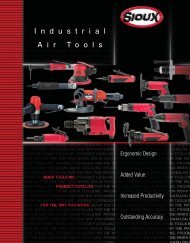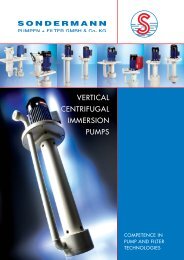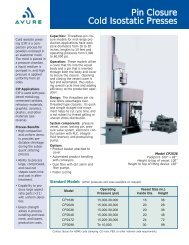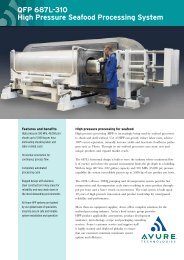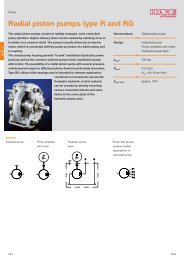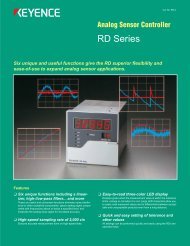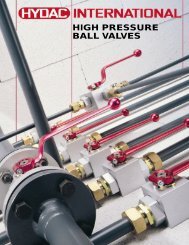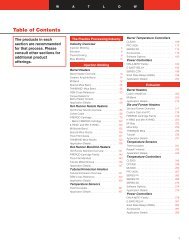Steel Ball Valves - Hasmak.com.tr
Steel Ball Valves - Hasmak.com.tr
Steel Ball Valves - Hasmak.com.tr
Create successful ePaper yourself
Turn your PDF publications into a flip-book with our unique Google optimized e-Paper software.
3. Objective of Standardization<br />
As high lighted by all of these standards, the fire test standard is prepared to establish test requirements which cover test<br />
procedures, performance requirements or evaluation criteria, product qualification and test certification, for the<br />
objective of technical evaluation of pressure containing capability of valves exposed to pre-determined, simulated fire<br />
conditions.<br />
Here, the performance requirements are intended to establish limits of acceptability of valves regardless of size, nominal<br />
pressure or class rating. The burn period, or test duration, is decided on the basis that it represents the maximum time<br />
required to extinguish most plant fires. Fires of longer duration than specified in the standards shall be, therefore,<br />
considered to be of a major magnitude with consequences, or damage, greater than those anticipated in the fire tests.<br />
For this reason, requirements for more or less s<strong>tr</strong>ingent testing may be negotiated and established by the valve<br />
manufacturer and its customer to meet the customer's specific service applications. In fact, API 607 was subjected to a<br />
major revision in its 4th Edition issued in 1993 for more realistic test requirements.<br />
4. Evaluation of Test Results<br />
The maximum allowable leakage rates in these standards are determined for the defined test temperature, pressure and<br />
duration. Here it is noted that leakages under other test conditions may be substantially different. Fire test standards are<br />
prepared for just a prototype test of the valve with a size and class rating selected by the manufacturer under predetermined<br />
test conditions assumably representing typical plant fire conditions. This can be <strong>tr</strong>anslated to mean that test<br />
reports certified to any of these fire test standards do not necessarily verify satisfactory performance of the valves that<br />
users may purchase from the manufacturer at any given time. As already mentioned, fire test is a kind of des<strong>tr</strong>uctive test<br />
(unlike the pressure test conducted for normal valve shipments), and no one would be willing to purchase such<br />
des<strong>tr</strong>uctively tested valves in a <s<strong>tr</strong>ong>com</s<strong>tr</strong>ong>mercial <strong>tr</strong>ansaction.<br />
It was specifically mentioned in BS 5146, 1974, Appendix A.1 that the "test is intended only as a prototype test and is<br />
intended to cover a range of sizes of valves having the same pressure rating, design details and material <s<strong>tr</strong>ong>com</s<strong>tr</strong>ong>position". A<br />
test report prepared by BSI for the fire test conducted on KITZ ball valves mentioned that the "report only relates to the<br />
actual ball valves which were tested and assessed. The results obtained therefore do not necessarily relate to samples<br />
from the production line and in no way imply the performance or quality of the continuing production."<br />
The range of sizes and pressure classes to be automatically qualified by a proto type test of a valve of a certain size and<br />
rating is in<strong>tr</strong>oduced here. Also it should be noted that potential leakage from pipe-to-valve end-connec-tion joint (either<br />
flanged, threaded or welded) cannot be evaluated by these standards, and not included in the allow-able external<br />
leakages specified. API Production Department issued a stan-dard API Bulletin 6F1 (* 5 ), for perfor-mance evaluation of<br />
such valve end connections exposed to the fire.<br />
*5 Bulletin on Performance of API and ASME End Connections in a Fire Test According to API Specification 6FA, 2nd Edition, Feb. 15, 1994.<br />
Fire Test Valve Qualification (API 607-1993)<br />
Size qualification<br />
Size of test Valve sizes<br />
valve (NPS) qualified (NPS)<br />
1<br />
/2<br />
3<br />
/4 and smaller<br />
1<br />
2<br />
4<br />
8<br />
3<br />
/4, 1, 1 1 /4, 1 1 /2<br />
1 1 /2, 2, 2 1 /2, 3<br />
3, 4, 6<br />
6 and larger<br />
Pressure rating qualification<br />
Rating of test<br />
valve (Class)<br />
150<br />
300<br />
400<br />
600<br />
800<br />
1500<br />
Valve ratings<br />
qualified (Class)<br />
150, 300<br />
300, 400, 600<br />
400, 600, 800<br />
600, 800, 900<br />
800, 900,1500<br />
1500, 2500<br />
Technical Information<br />
022 122



